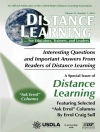‘Makes an interesting and thought-provoking contribution to the field of mathematics instruction. Looking at math and literacy as closely aligned language structures creates a need to rethink the strategies used for math instruction.’
—Catherine Hernandez, Second-Grade Teacher
Detroit Public Schools, MI
‘It′s about time! Teaching literacy has been researched, written about, and rewritten so that it can be taught using the most effective methods for optimal learning. Little of this has transpired for mathematics. This book is very unique.’
—Deborah Gordon, Third-Grade Teacher
Madison Simis School, Phoenix, AZ
Transform the way you think about and teach elementary-level mathematics!
While many teachers feel confident about their preparation and strategic repertoire for literacy instruction, some are less confident about their preparation and content depth for teaching math. Based on the idea that mathematics and reading are two subject areas more alike than different, What If Your ABCs Were Your 123s? illustrates the parallels between literacy and mathematics and helps elementary teachers take what they know about teaching literacy and apply that knowledge to strengthen their math instruction.
Designed for the primary and elementary levels, this practical handbook illustrates how teachers can deepen their own mathematical understanding and improve students′ achievement by providing:
- Teaching scenarios that model the crossover of strategies
- Comprehension strategies to develop and strengthen students′ grasp of foundational concepts
- Instructional approaches to help students value mathematics and feel competent in their abilities to reason, solve problems, and communicate their thinking
- Student work samples illustrating literacy and math connections
Gain a detailed, comprehensive understanding of the relationship between literacy and numeracy and significantly increase your effectiveness in mathematics instruction!
Tabla de materias
Dedication
Preface
Acknowledgments
1. What If?
2. What Do Good Readers and Mathematicians Look Like?
3. What Does Understanding Look Like?
4. How Do Students Apply Their Understanding of Numbers?
5. How Do Teachers Connect Ideas to Practice?
Resources
Sobre el autor
Leslie Minton is currently a mathematics consultant for Math Matters 2, Portland, Maine. She is currently providing individualized mathematics professional development to area schools and districts PK-8, as well as, teaching Math Methods courses at the University of Southern Maine. Previously, Leslie was a Project Director for the Maine Mathematics and Science Alliance, Augusta, Maine. She provided technical assistance to schools as well as designed a professional development course and diagnostic materials designed to support numeracy understanding. She is a fellow of the second cohort group of Governor’s Academy for Science and Mathematics Educators. She has taught regular and special education for grades 4-12. Leslie receive her B.S. in elementary and special education from the University of Maine at Farmington and her M.Ed in curriculum, instruction and assessment from Walden University. Currently she is completing a M.Ed program, Educational Design and Media Technology, Full Sail University.












